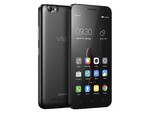Lenovo Vibe C
Specifications

Secondary Camera: 2 MPix
Price comparison
Reviews for the Lenovo Vibe C
Source: Laptop Media
 Archive.org version
Archive.org versionVibe C offers a convenient design thanks to its 5-inch display and slightly curved sides. Additionally, you are presented with a good performance for this range provided by Qualcomm Snapdragon 210. Even when it comes to software, the model performs at more than a reasonable level, offering a UI with useful additional pre-installed apps. Just like almost every budget smartphone, Vibe C has its drawbacks. They are chiefly manifested in its display, as it lacks an IPS panel, although we can perhaps overlook this since the customers that will be using this device will not really need an IPS screen. The battery life is another disadvantage. Of course, it depends on how you are planning to use the device but don’t expect good durability.
Single Review, online available, Very Long, Date: 09/10/2016
Comment
Qualcomm Adreno 304: Integrated mid-range graphics card in the Snapdragon 210 SoCs that supports OpenGL ES 3.0 and features unified shaders.
These graphics cards are not suited for Windows 3D games. Office and Internet surfing however is possible.
» Further information can be found in our Comparison of Mobile Graphics Cards and the corresponding Benchmark List.
210 MSM8909: Entry-level SoC with four ARM Cortex-A7 cores at max. 1.1 GHz. Furthermore, it features an integrated Cat 4 LTE Modem and 1080p video de- and encoding.» Further information can be found in our Comparison of Mobile Processsors.



